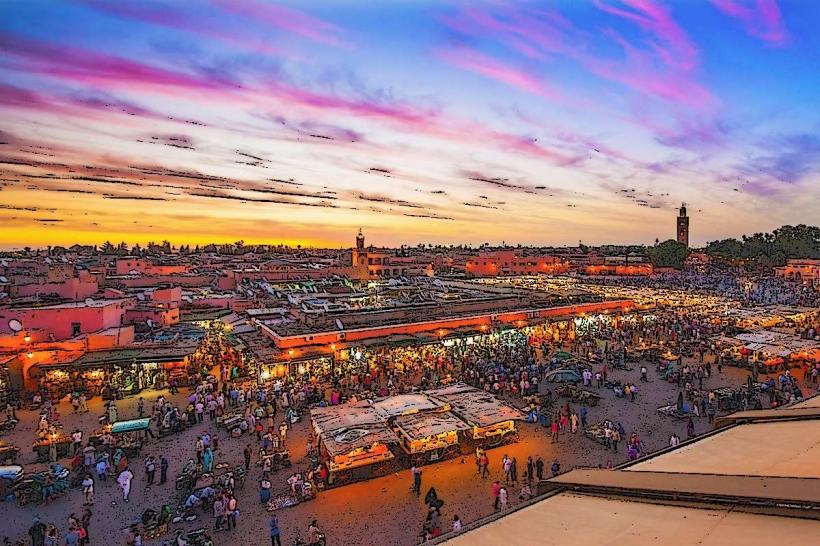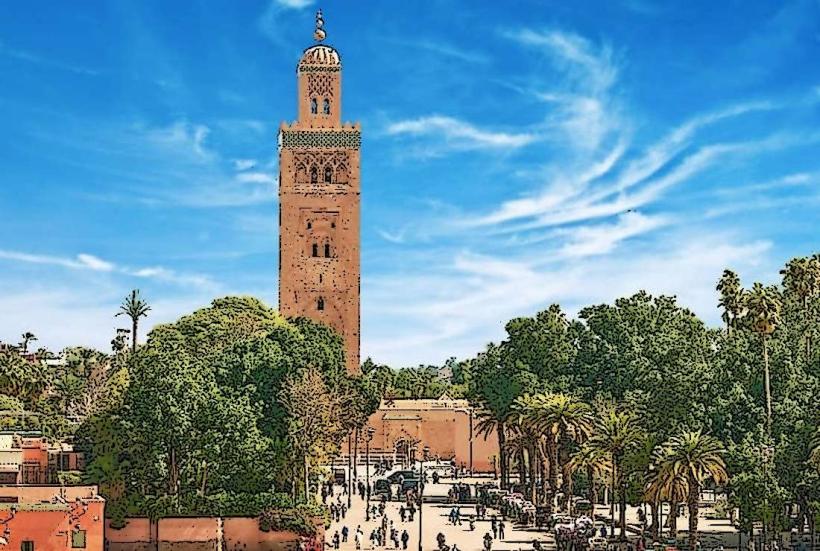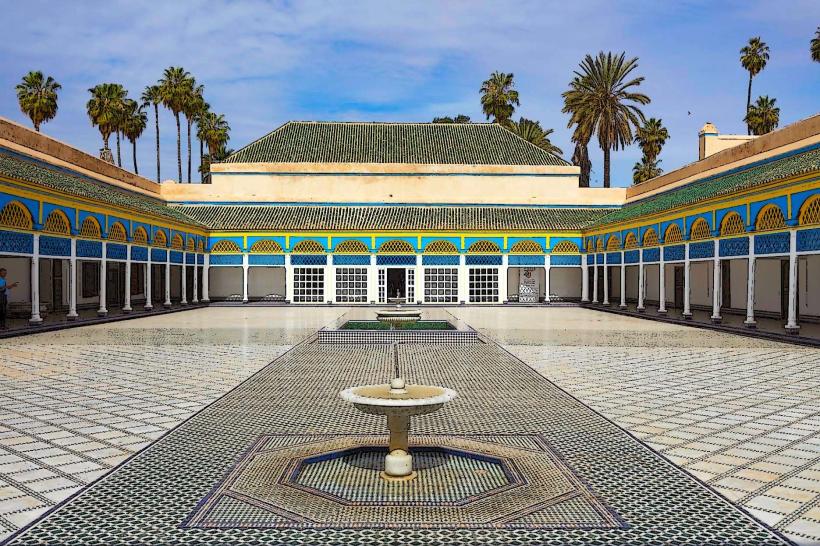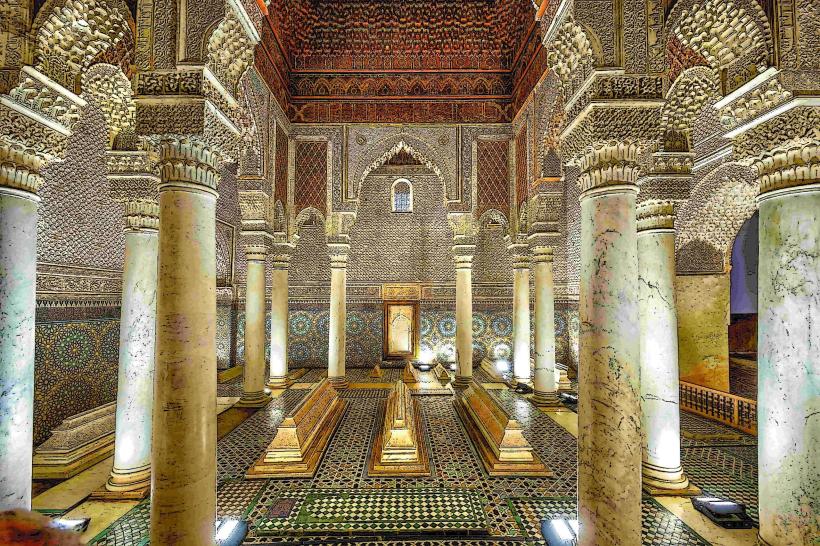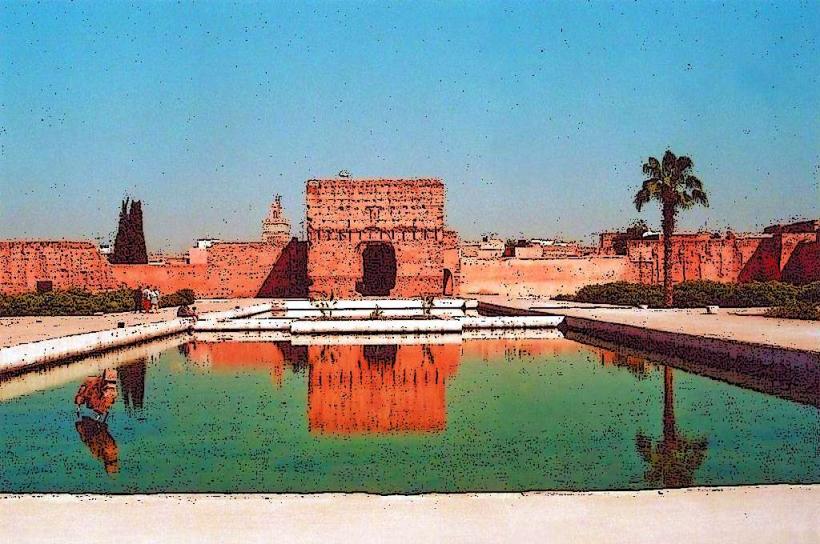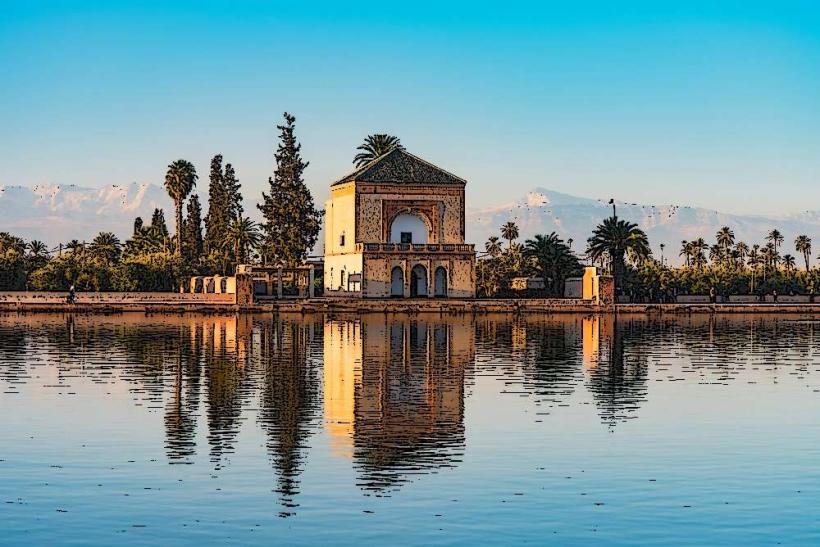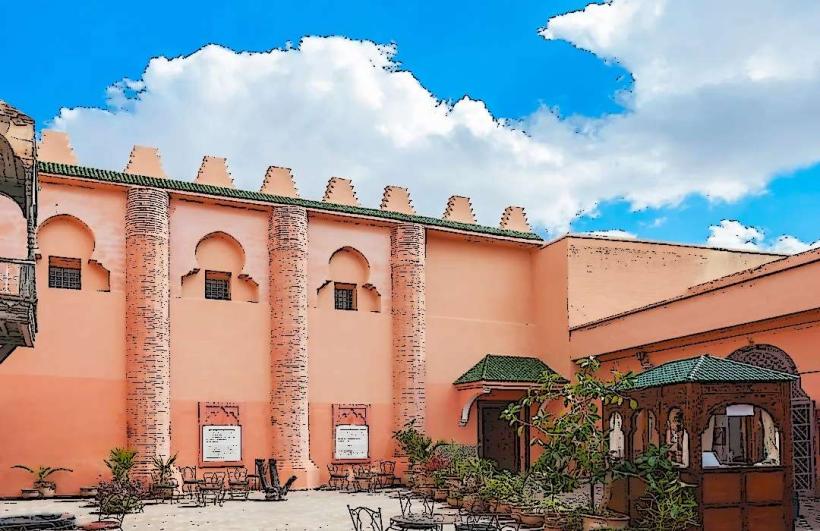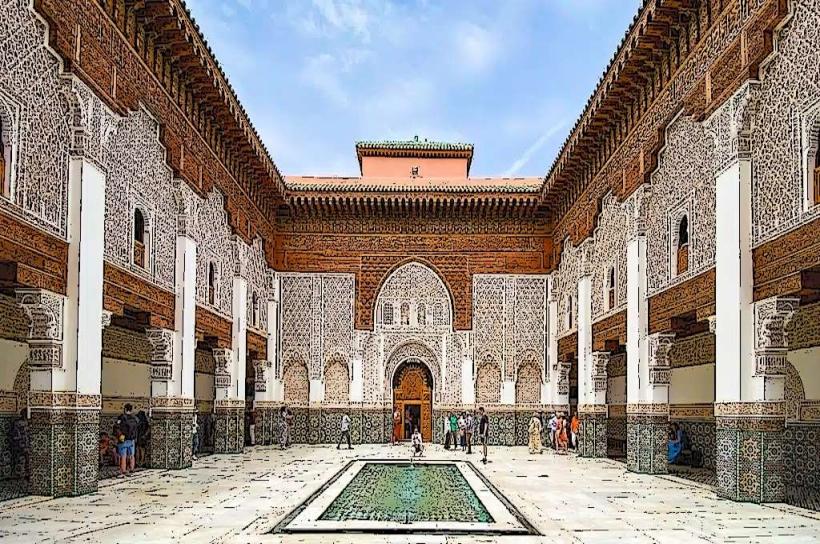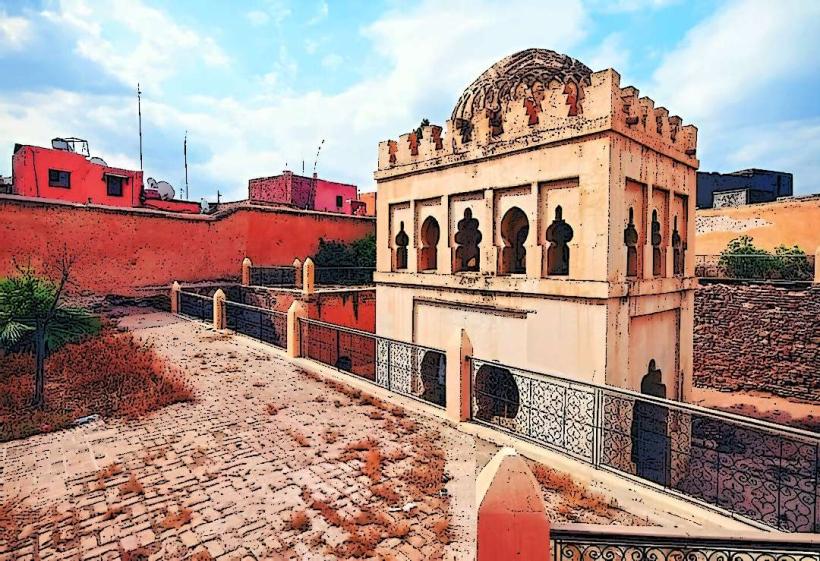Information
Landmark: Majorelle GardenCity: Marrakech
Country: Morocco
Continent: Africa
Majorelle Garden, Marrakech, Morocco, Africa
Overview
Tucked away in the heart of Marrakech, Morocco, the Majorelle Garden (Jardin Majorelle) bursts with vivid blooms and winding paths, offering a serene haven for art and nature lovers alike, on top of that french painter Jacques Majorelle first designed the garden in the early 1900s, and decades later Yves Saint Laurent and Pierre Bergé brought it back to life.Today, it’s famous for its mix of rare palms, intricate archways, bursts of cobalt blue, and a quiet that settles like soft shade, after that it’s one of Morocco’s busiest landmarks, alive with colors and patterns that blend styles from far-off worlds.The origins trace back to French Orientalist painter Jacques Majorelle (1886–1962), who brought them to life with bold strokes of cobalt blue, consequently development began in 1923, after Majorelle bought a plot on Marrakech’s edge, then a sleepy palm grove where the air smelled faintly of dust and date trees.Over the course of decades, Majorelle turned the grounds into a lush botanical wonder, bringing in rare plants from every corner of the globe-towering palms, spiny cacti, and blooms that caught the light like jewels, likewise in 1931, he brought in French architect Paul Sinoir to create a bold cubist-style villa in the heart of the garden, its walls now painted the striking Majorelle blue.Honestly, Majorelle Blue - a deep, vivid cobalt that seems to hum in the sunlight - became the garden’s unmistakable signature, on top of that drawing on the patterns of Moroccan tiles and the textures of Berber textiles, Majorelle splashed the color across the property-on walls, fountains, pots, doors, even the thin trim around a window.I think, The color isn’t just for show-it pops brightly against the deep greens and earthy browns of the plants, sharpening the garden’s sensory pull, along with majorelle Garden spans nearly a hectare-about 2.5 acres-with winding paths that lead past still pools, splashing fountains, and neat planting beds, its layout blending the order of Islamic garden design with a bold modernist touch.The plant collection holds more than 300 species gathered from five continents, from shining African succulents to delicate Asian orchids, subsequently you’ll find towering bamboo groves, spiky cacti and plump succulents, vivid bougainvillea, fragrant jasmine, and water lilies floating on calm surfaces.Palm, banana, and date trees sway above aquatic plants and lotus blooms resting in petite, mirror-like pools, moreover still water, gentle fountains, and narrow rills catch the light and echo the shapes around them, bringing a cool, quiet sense of peace, a little Pebbled paths wind lazily under cool shade, weaving through thick greenery and revealing a fresh view with each bend, besides color: Alongside Majorelle Blue, splashes of yellow, green, and orange break up the scene, adding contrast and a lively rhythm.The cubist-style Villa Bou Saf Saf stood at the heart of the property, its dazzling walls and tall windows housing Majorelle’s studio and home, in turn its vibrant blue paint and shining yellow accents make it the garden’s star, catching the eye like sunlight on fresh petals.The Berber Museum, once an artist’s studio, showcases a remarkable array of artifacts-brightly woven textiles, intricate jewelry, gleaming weapons, and everyday objects worn smooth by use, subsequently it offers a glimpse into Amazigh (Berber) culture, turning the garden into more than a feast for the eyes-it's a living story, like hearing classical songs drift on the breeze, moderately After Majorelle died, Yves Saint Laurent and Pierre Bergé found the garden overgrown, its paths choked with weeds, along with in 1980, Yves Saint Laurent and Pierre Bergé purchased the property, determined to save it and bring back its faded charm.They brought in fresh plant species, fixed the crumbling walls, and made sure the spirit of Majorelle and the richness of Moroccan heritage stayed alive, not only that after Saint Laurent died in 2008, his ashes were laid among the roses in the garden, where a stone column now stands in his honor.The garden overflows with color and sound-sparrows chatter in the branches, jasmine and citrus perfume the air, bamboo whispers overhead, and a cool shaded breeze brushes your skin, then tucked inside Marrakech’s bustling Gueliz district, the garden feels like a cool, quiet retreat, where the scent of jasmine drifts above the hum of traffic.Photography and quiet reflection come together here-its bold splash of color and carefully balanced design draw in photographers, artists, and travelers looking for a spark of inspiration or a pause in the noise, while legacy and Impact Art meets botany: the garden isn’t just a area for plants-it’s a living canvas, where winding paths and arching branches blur the boundaries between landscape design, architecture, and painting.The garden doubles as a classroom through the Berber Museum, giving visitors a vivid glimpse into Morocco’s indigenous traditions and helping keep them alive, as a result the Majorelle Garden, now under the Yves Saint Laurent Museum Foundation, draws visitors from around the world, with ticket sales helping fund cultural projects and preserve Morocco’s rich heritage-like restoring the deep blue walls that glow under the sun.In the end, Majorelle Garden isn’t just a garden-it’s a living canvas, where cobalt-blue walls meet bursts of green and every path reflects the artistry of two generations of visionaries, in addition it tells of beauty without boundaries, where Moroccan heritage meets sleek French modernism and bursts of lush greenery, all blending in effortless harmony.Wandering its shaded paths feels less like a simple garden stroll and more like stepping into a world of vivid blooms, aged stories, and echoes of another time.
Author: Tourist Landmarks
Date: 2025-09-26

